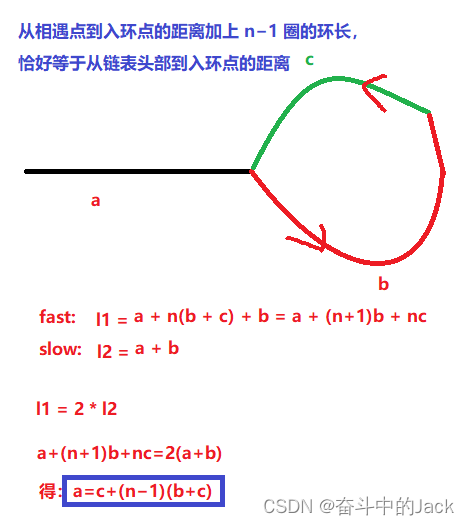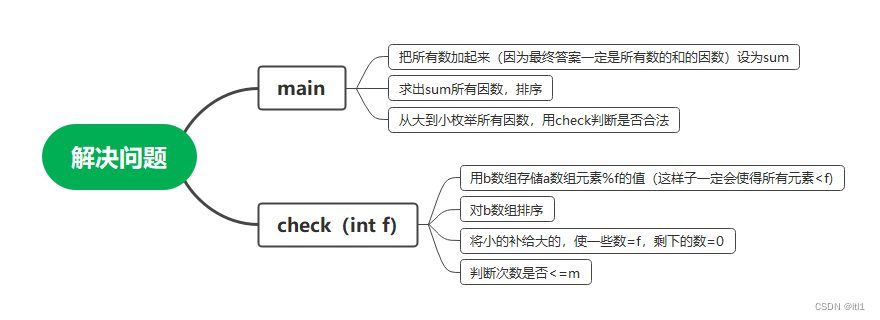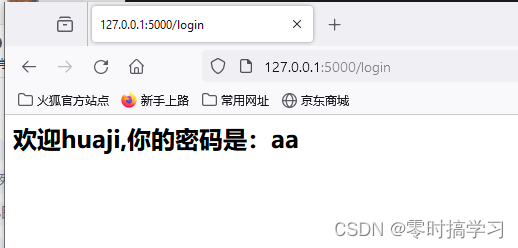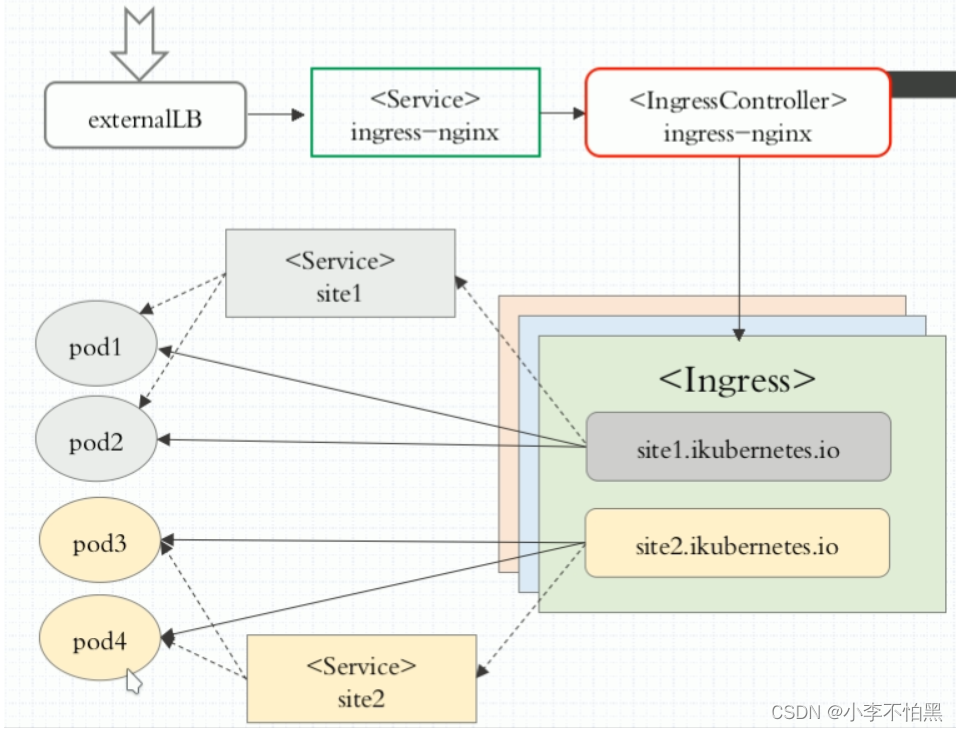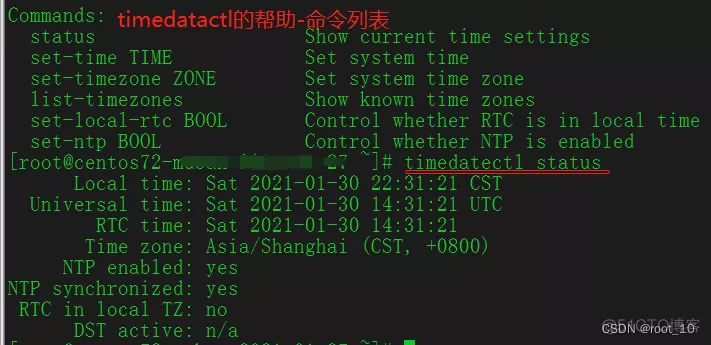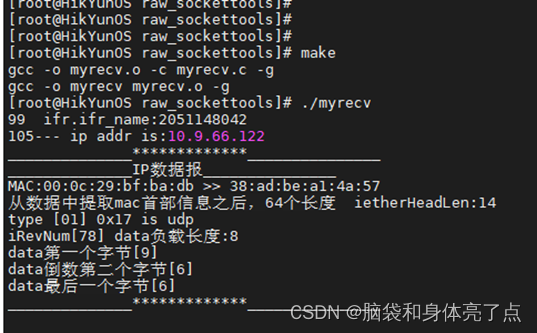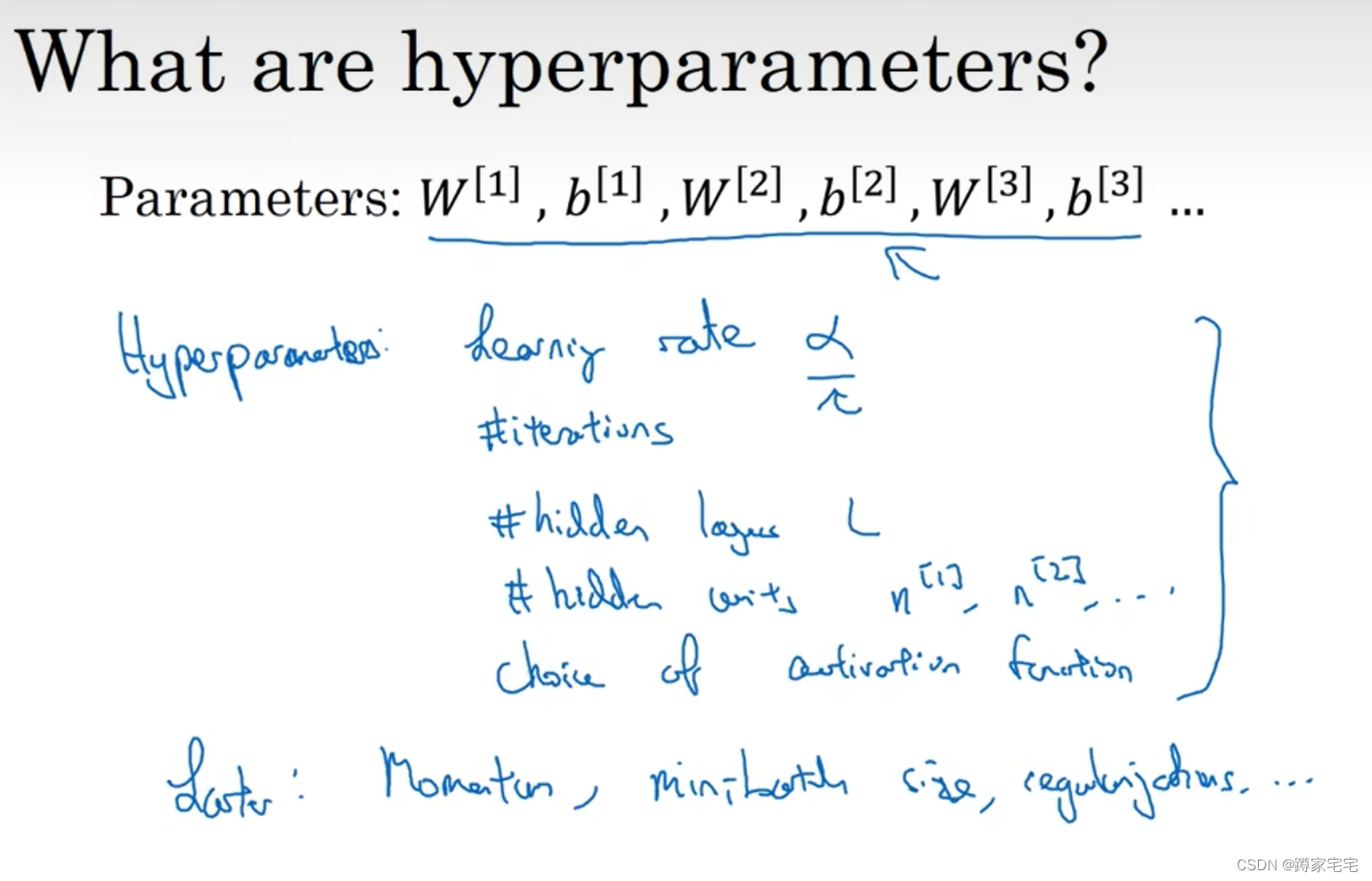给定一个链表的头节点 head ,返回链表开始入环的第一个节点。 如果链表无环,则返回 null。
如果链表中有某个节点,可以通过连续跟踪 next 指针再次到达,则链表中存在环。 为了表示给定链表中的环,评测系统内部使用整数 pos 来表示链表尾连接到链表中的位置(索引从 0 开始)。如果 pos 是 -1,则在该链表中没有环。注意:pos 不作为参数进行传递,仅仅是为了标识链表的实际情况。
不允许修改 链表。
示例 1:

输入:head = [3,2,0,-4], pos = 1
输出:返回索引为 1 的链表节点
解释:链表中有一个环,其尾部连接到第二个节点。
示例 2:

输入:head = [1,2], pos = 0
输出:返回索引为 0 的链表节点
解释:链表中有一个环,其尾部连接到第一个节点。
示例 3:

输入:head = [1], pos = -1
输出:返回 null
解释:链表中没有环。
提示:
- 链表中节点的数目范围在范围 [0, 10^4] 内
- -10^5 <= Node.val <= 10^5
- pos 的值为 -1 或者链表中的一个有效索引
进阶:你是否可以使用 O(1) 空间解决此题?
解法思路:
1、hash,遍历每个节点并记录,再次遍历到则存在环并返回
2、快慢指针,先判断是否有环,若有,则找出环的第一个节点(从相遇点到入环点的距离加上 n−1 圈的环长,恰好等于从链表头部到入环点的距离,使用第三个指针(初始化指向head),third 与 slow 刚好在入环处相遇)
法一:
/**
* Definition for singly-linked list.
* class ListNode {
* int val;
* ListNode next;
* ListNode(int x) {
* val = x;
* next = null;
* }
* }
*/
public class Solution {
public ListNode detectCycle(ListNode head) {
// hash
// Time: O(n)
// Space: O(n)
ListNode pos = head;
Set<ListNode> set = new HashSet<>();
while (pos != null) {
if (set.contains(pos)) {
return pos;
} else {
set.add(pos);
}
pos = pos.next;
}
return null;
}
}法二:
/**
* Definition for singly-linked list.
* class ListNode {
* int val;
* ListNode next;
* ListNode(int x) {
* val = x;
* next = null;
* }
* }
*/
public class Solution {
public ListNode detectCycle(ListNode head) {
// 快慢指针,先判断是否有环,若有,则找出环的第一个节点
// 1. 判断是否有环
if (head == null || head.next == null || head.next.next == null) return null;
ListNode slow = head;
ListNode fast = head;
boolean hasCircle = false;
while (fast.next != null && fast.next.next != null) {
slow = slow.next;
fast = fast.next.next;
if (slow == fast) {
hasCircle = true;
break;
}
}
// 2. 找出入环节点
// 从相遇点到入环点的距离加上 n−1 圈的环长,恰好等于从链表头部到入环点的距离
// 使用第三个指针(初始化指向head),third 与 slow 刚好在入环处相遇
if (hasCircle) {
ListNode third = head;
while (slow != third) {
slow = slow.next;
third = third.next;
}
return third;
}
return null;
}
}数学证明:从相遇点到入环点的距离加上 n−1 圈的环长,恰好等于从链表头部到入环点的距离
